Chinese Invention: World’s First Known Movable Type Printing
A. Sutherland - AncientPages.com - German printer Johannes Gutenberg did not invent movable type printing; he contributed movable type mechanical printing technology in Europe in 1450.
More than four centuries earlier, the Chinese inventor Bi Sheng (990-1051 AD) created the world's first known movable type system for printing.
Left: Bi Sheng (about 970 - 1051) is a native of Yingshan, Hubei. He is the inventor of Movable-Type Printing. Image source
Without the importation of paper and printing from China, Europe would have continued to copy books by hand for much longer, in a painstaking and slow process that could take more than a year for each book
His printing system was invented between 1041 and 1048 during the Song dynasty.
Block printing was an expensive and time-consuming process, for each carved block could only be used for a specific page of a particular book; additionally, a single carving mistake could ruin the whole block.
The new innovative printing system created by Chinese porcelain made books faster to print.
Bi Sheng carved individual characters on identical pieces of fine clay. Each movable type had only one Chinese character carved in relief on a small block of moistened clay.
After the block had been hardened by fire, the type became durable and could be used anytime and anywhere. The movable type pieces could be glued to an iron plate and easily detached from the plate.
Contrary to many claims, Bi Sheng's clay types were not fragile but 'hard and tough as horn' as described by Bao Shicheng (1775-1885).
Bi Sheng's (about 970 - 1051) invention paved the road for cultural and economic development of China, and also contributed to the improvement of world civilization. Image credit: General Office of Hubei Provincial People's Government
Characters could be assembled to print a page and then broken up and redistributed as needed. When the printing was finished, the pieces could be put away for future use.
Bi Sheng's invention was recorded by Shen Kuo (1031-1095), the Chinese polymath, scientist, and statesman, in his book The Dream Pool Essays in 1088 AD.
'[Bi Sheng] took sticky clay and cut in it characters as thin as the edge of a coin. Each character formed, as it were, a single type. He baked them in the fire to make them hard. He had previously prepared an iron plate and he had covered his plate with a mixture of pine resin, wax, and paper ashes. When he wished to print, he took an iron frame and set it on the iron plate. In this, he placed the types put close together.
 Bi Sheng's invention was recorded by Shen Kuo (1031-1095), the Chinese polymath, scientist, and statesman, in his book The Dream Pool Essays' in 1088 AD. Image credit: General Office of Hubei Provincial People's Government
Bi Sheng's invention was recorded by Shen Kuo (1031-1095), the Chinese polymath, scientist, and statesman, in his book The Dream Pool Essays' in 1088 AD. Image credit: General Office of Hubei Provincial People's Government
When the frame was complete, the whole made one solid block of type. He then placed it near the fire to warm it. When the paste [at the back] was slightly melted, he took a smooth board and pressed it over the surface so that the block of type became as even as a whetstone.
If one were to print only two or three copies, this method would be neither simple nor easy. But for printing hundreds or thousands of copies, it was marvelously quick.
As a rule, he kept two forms going. While the impression was being made from the one form, the type was being put in place on the other. When the printing of one form was finished, the other was then ready. In this way, the two forms alternated and the printing was done with great rapidity...'(Needham, Joseph (1986). Science and Civilization in China: Volume 5)
It did not take Bi Sheng long to make 30,000 characters in everyday use.
Movable type printing developed very fast and spread to Korea, Japan, Vietnam, and finally to Europe, while based on the clay type, the type made of wood, lead, tin, and copper gradually appeared.
Written by – A. Sutherland AncientPages.com Staff Writer
Updated on January 13, 2024
Copyright © AncientPages.com All rights reserved. This material may not be published, broadcast, rewritten or redistributed in whole or part without the express written permission of AncientPages.com
More From Ancient Pages
-
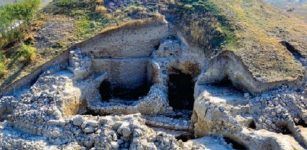 6,300 Years Old Golden Artifact Unearthed At Solnitsata ‘The Salt Pit’ Prehistoric Settlement
Archaeology | Nov 23, 2015
6,300 Years Old Golden Artifact Unearthed At Solnitsata ‘The Salt Pit’ Prehistoric Settlement
Archaeology | Nov 23, 2015 -
 6,000-Year-Old Discovery Of Artifacts Associated With Ancient Lengyel Culture
Archaeology | Mar 27, 2020
6,000-Year-Old Discovery Of Artifacts Associated With Ancient Lengyel Culture
Archaeology | Mar 27, 2020 -
 Large Mammoth Tusk And Bones Buried For Thousands Of Years Found In North Dakota
News | Jan 8, 2024
Large Mammoth Tusk And Bones Buried For Thousands Of Years Found In North Dakota
News | Jan 8, 2024 -
 Satyr Mask Discovered In Ancient Greek Emporium Pistiros In Thracians’ Odrysian Kingdom Near Bulgaria’s Vetren
Civilizations | Sep 22, 2015
Satyr Mask Discovered In Ancient Greek Emporium Pistiros In Thracians’ Odrysian Kingdom Near Bulgaria’s Vetren
Civilizations | Sep 22, 2015 -
 The Curse Of Chief Chocorua Who Died On The Mountain That Bears His Name
Featured Stories | Mar 9, 2019
The Curse Of Chief Chocorua Who Died On The Mountain That Bears His Name
Featured Stories | Mar 9, 2019 -
 First Pompeiian Human Genome Sequenced Fron An Individual Who Died After The Eruption Of Mount Vesuvius In 79 C.E
Archaeology | May 26, 2022
First Pompeiian Human Genome Sequenced Fron An Individual Who Died After The Eruption Of Mount Vesuvius In 79 C.E
Archaeology | May 26, 2022 -
 Byzantine Granary With 11 Pithoi Found In Byzantine City Of Amorium In Central Turkey
Archaeology | Aug 5, 2020
Byzantine Granary With 11 Pithoi Found In Byzantine City Of Amorium In Central Turkey
Archaeology | Aug 5, 2020 -
 Battle Of Visby – Death Came With King Atterdag’s Ships
Featured Stories | Jul 27, 2022
Battle Of Visby – Death Came With King Atterdag’s Ships
Featured Stories | Jul 27, 2022 -
 Wars Of The Roses: Thirty Two Years Of Struggle To Claim English Throne
Featured Stories | Aug 5, 2017
Wars Of The Roses: Thirty Two Years Of Struggle To Claim English Throne
Featured Stories | Aug 5, 2017 -
 On This Day In History: Treaty of Bergerac Ratified – On Sep 17, 1577
News | Sep 17, 2016
On This Day In History: Treaty of Bergerac Ratified – On Sep 17, 1577
News | Sep 17, 2016 -
 Unique Ancient Half-Mummy Unearthed In Luxor, Egypt Mystifies Archaeologists
Archaeology | Jun 6, 2022
Unique Ancient Half-Mummy Unearthed In Luxor, Egypt Mystifies Archaeologists
Archaeology | Jun 6, 2022 -
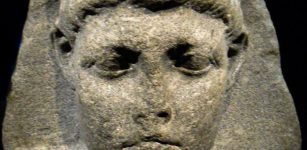 ‘Little Caesar’: Forgotten ‘King Of Kings’ Who Died Very Young
Featured Stories | May 11, 2020
‘Little Caesar’: Forgotten ‘King Of Kings’ Who Died Very Young
Featured Stories | May 11, 2020 -
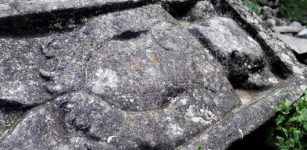 Pre-Hispanic Carved Stone Monuments Discovered On A Mountaintop In Puebla, Mexico
Archaeology | Jul 25, 2020
Pre-Hispanic Carved Stone Monuments Discovered On A Mountaintop In Puebla, Mexico
Archaeology | Jul 25, 2020 -
 Climate Change Likely Drove Early Human Species To Extinction – Scientists Say
Archaeology | Jul 31, 2023
Climate Change Likely Drove Early Human Species To Extinction – Scientists Say
Archaeology | Jul 31, 2023 -
 Archaeologists Unearthed Alabaster Statue Of Queen Tiye In Luxor, Egypt
Archaeology | Mar 24, 2017
Archaeologists Unearthed Alabaster Statue Of Queen Tiye In Luxor, Egypt
Archaeology | Mar 24, 2017 -
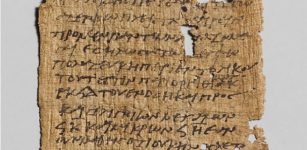 Papyri Was Still In Use After The Arab Invasion In Egypt
Archaeology | Jul 14, 2020
Papyri Was Still In Use After The Arab Invasion In Egypt
Archaeology | Jul 14, 2020 -
 Rare 7,000-Year-Old Clay Figurine Discovered In Battifratta Cave, Lazio
Archaeology | Jul 29, 2023
Rare 7,000-Year-Old Clay Figurine Discovered In Battifratta Cave, Lazio
Archaeology | Jul 29, 2023 -
 Lunar Society: Great Scientists Of The 18th Century Who Changed The World
Featured Stories | Jul 13, 2018
Lunar Society: Great Scientists Of The 18th Century Who Changed The World
Featured Stories | Jul 13, 2018 -
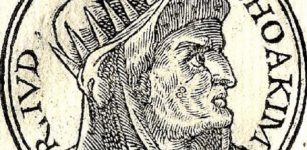 Kingdoms Of Judah And Babylon Remained In Long-Lasting Conflict
Featured Stories | Sep 5, 2019
Kingdoms Of Judah And Babylon Remained In Long-Lasting Conflict
Featured Stories | Sep 5, 2019 -
 Scientists Investigate – Did The Human Brain Shrink 3,000 Years Ago?
Human Beginnings | Aug 6, 2022
Scientists Investigate – Did The Human Brain Shrink 3,000 Years Ago?
Human Beginnings | Aug 6, 2022


